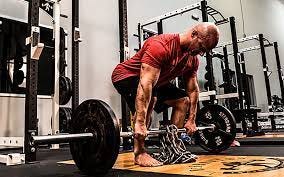When going to the gym, you may have noticed two different types of bars that people use for the ‘deadlift’ exercise. One is a straight barbell, while the other is more of a hexagon shaped bar. Today, we are going to dive into what are the main differences between the two and what is the purpose of using one versus the other. Also, I will correlate this information to a ‘real world’ application on how this knowledge can better suit you outside of the gym in day-to-day life, so read until the end.
The ‘Trap/Hex’ Bar:
Usage, Purpose and Benefits:
The weight is more centralized because the person can stand in the middle, ‘in line’ with the load being applied on each end of the bar.
This allows the person’s torso to be more upright, which decreases the amount of strain that will be applied to the lower back.
The hex bar deadlift puts a greater emphasis on the knees and quads, as opposed to the glutes and hamstrings, once again.
For people who have poor mobility, the hex bar is less demanding in that sense and a better alternative to keep your lower back in proper positioning, as opposed to the barbell deadlift.
Also, for those dealing with hip problems, this is a better alternative if you still desire to perform this exercise.
Studies have found that the athletes were able to lift significantly more weight with trap bars and that force production, power, and velocity were all higher with trap bars, when compared to the barbell deadlift.
The Barbell Deadlift:
Usage, Purpose and Benefits:
The weight is more anterior (forward) with a traditional barbell dealift. This will put a greater emphasis on your lower back muscles, glutes, and hamstrings when performing.
This exercise is great to reinforce proper core stability, bracing techniques, and latissimus dorsi muscle engagement.
This exercise can be a better alternative for those people who struggle with knee pain/issues, when compared to the hex bar DL.
Due to the greater emphasis on hamstrings and glutes, it is superior to the hex bar, if the goal is hamstring/glute hypertrophy.
How does this apply to me outside of the gym?
…
When you are lifting a box, couch, your kid, etc… you can use these principles to better put your body in a more safe and advantageous position to complete the task.
When the weight of the object is more centralized, like in the hex bar DL, the torso angle remains more upright, which causes less strain in the lower back.
This means that the closer to your body you can get the object before you lift it, the better the angle of your torso and less likely you are to put unnecessary strain on your spine.
If you have ‘bad knees’, it may be more advantageous the keep the object slightly out in front of you, in order to put a greater emphasis on your hips and lower back to do the job correctly.
Learning how to pick an object up off the ground is a life-long process; however, that process can be expedited by learning from a physical therapist, or another expert in that domain.
Your body deserves to be used correctly, so take the time and do the research, practice your lifts, and be safe.
Dr. Adam Kerr, PT, DPT, CNC.
Kerr Performance Inc.
Instagram: @Kerrperformance1




